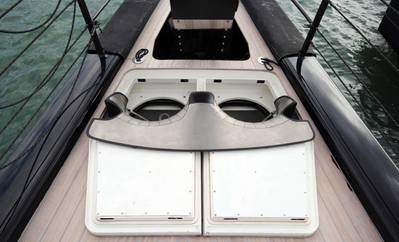How Composites are Revolutionizing the Yachting World
Composite materials are used in a range of industries, including Formula 1 cars, boat building, bicycles and motorcycles, component construction, safety equipment and architecture, amongst others. Over the years composite services have revolutionized many industries; Yachting Pages spoke to Branagh Marine, a company based in Palma, Mallorca, to understand the impact on the yachting world.
A composite is a product which is composed of more than one type of material to meet specific design needs.
Luke Hendy from Branagh Marine Composites, a specialist in the design and manufacture of carbon fiber equipment for superyachts explained, “Composites are combinations of fibers and resin materials in a definite proportion to create a component tailored to the desired specifications. While the resin allows the product to hold its composite shape, the fibers act as reinforcement and the two together make an extremely durable and lightweight product.
“The structural requirements, including the quantity of resin to fiber, are calculated by a structural engineer to ensure the correct performance of the part with extremely accurate results.”
Composites have been around for many years and were once considered a very expensive option, but technological advances in raw materials and in manufacturing processes have resulted in a significant drop in production costs, making composites a much more affordable option.
Boat builders have been building fiberglass boats for decades; but more recently, high-performance yachts have been taking advantage of advanced composites (which use high-strength fibers with more advanced epoxy resin systems, compared to older traditional GRP construction methods that use glass fibre and a polyester resin system.
Advanced composites are becoming more important to the marine industry; the lightweight structure reduces the weight of the yacht, increasing operating efficiency and reducing fuel consumption. In addition, the advanced composites tend to be greener than general composites or alloys producing fewer emissions in the manufacturing process.
Luke added, “The refit and repair industry has benefitted hugely by using composites to reduce the impact to the vessel when making changes or installing new parts during a refit. The simplified installation costs mean less impact on other work; a good example is that there is no need for welding, which in turn means no disruption to the interior or underlying systems that are in danger of being damaged due to hot work.”
Composites enable a 30 to 40% reduction in overall weight of a structure or component in contrast to traditional metals such as steel or aluminum. This overall decrease in weight leads to a cascade of other benefits such as:
- Less maintenance
- No corrosion
- Lower operating costs
- Less greenhouse gas emissions
- Greater fuel efficiency
- Increased stability
- Increased working life and lower life time cost
- Lower installation and assembly costs
By Michelle Williams







